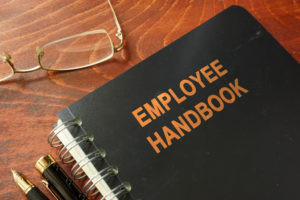 If you prefer to read this on the website, click here. https://www.donswiftandassociates.com/?p=954&preview=true
If you prefer to read this on the website, click here. https://www.donswiftandassociates.com/?p=954&preview=true
Thank you for reading, Hope you enjoy.
H R Director
I will say that as an HR Director I could depend on my daily plans to change at 8:02 am when someone would stumble into my office with a problem that “only the HR Director could solve.” As a result, that meant that there was conflict in the air and everyone felt that the job of the HR Director was to resolve it or there was something that no one else wanted to do.
Also, I have spent many hours wondering “just how many jobs does the HR Director have?” I remember one of my CEO’s saying to me that he felt that it was my job to take care of all “the people problems.” That way we could be sure we were using a consistent approach to managing our people. When I would try to respond with statements about training, or shared-responsibility he would just wave his hand at me and dismiss the idea.
Hats
So, how many hats does the HR Director wear? Through much reflection I have come up with the following. And, I think I still don’t have them all.
Recruiting
- Recruiting – How many times have I heard the demand “I need people!” And, the second part of this demand was that “I don’t just need people; I need the right people, now!” My job priorities would change then because finding “the right people was my top mission in life.”
Hiring
- Hiring – So, we got the people, now we have to get them on the payroll.Therefor, I remember supervisors standing outside my door on a Monday morning impatiently waiting for me to hand over people as I was trying to get them through the hiring process. The urgency would sometimes be so great that we will do just what it takes to get them on the payroll and we will complete the rest later.
Reporting
- Reporting – Then there were the sometimes endless reports that had to be done on a monthly basis and for compliance reasons. Besides hiring and firing people, most companies believe that the HR role in a company is to do the reports.
Firing
- Firing – Most of the companies I have worked for were filled with conflict-adverse supervisors and managers. If they thought any conversation was headed toward a disagreement, I would be brought into the conversation. Therefor, I think I was only successful in a couple of companies of actually training supervisors in the termination of employment process so they could do their part.
Training
- Training – It seems it is endless: on-boarding, skill-specific, compliance, cross-training, OJT – and on. And, then there are the records. What a nightmare.
Retention
- Retention – The endless questions as to why good employees would leave and conducting exit interviews. Or, the opposite question – how do we get rid of the bad employees. Here is where the HR personnel throw up their hands and ask “don’t they listen and do the documenting as they should?”
Voice of the Company
- Voice of the Company – Communications of all sorts seem to begin and end in HR. it’s a good place to dump these kinds of duties.
Morale
- Morale – The HR Director and staff are charged with the measurement of and the maintenance of company morale.
Arrangements
- Arrangements – About 100% of the activities the company plans are arranged by the HR personnel. And, nobody understands just how much effort that takes.
Special Projects
- Special Projects – Want to compete in a city-wide or state-wide contest? How about supporting local social issues? What about putting on an employee party of some sort? HR can do it!
Professional
Well, I suspect I could go on and on. Therefor, the important question gets to be “what does the HR professional do with all this?” In reality, the HR profession is just that – a profession. It requires study, practice, documentation, verbalization, leadership, management, certification and all those other requirements a profession. Many HR professionals get discouraged because it seems they are called upon to do everything but what they have been trained to do – you know, a little like the “clean-up person.”
Above all, the HR professional must focus on the body of knowledge that outlines the HR Professional Discipline. Inside this body of knowledge are the disciplines, rules, regulations and other foundation requirements that make all the things I listed above doable within a framework of being that central spark the company needs for real engagement and success. Hurray for the flexible HR Manager who keeps her cool and keeps the ship right. You are a hero in my book!
In Regards, Don Swift
(Some information taken from Steve Spratt Hotdocs)
P.S. If you find this newsletter helpful, please consider sharing it with your friends, family, and colleagues. If you need assistance, call 940-228-0550. You can visit my website for more information at www.donswiftandassociates.com.




